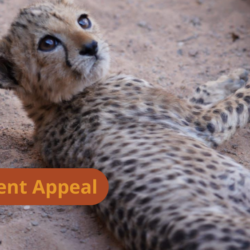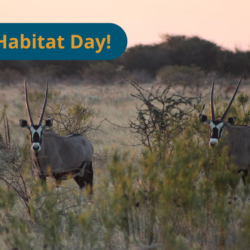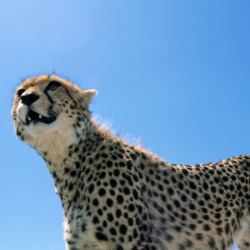Researching the cheetah to build better conservation strategies
-
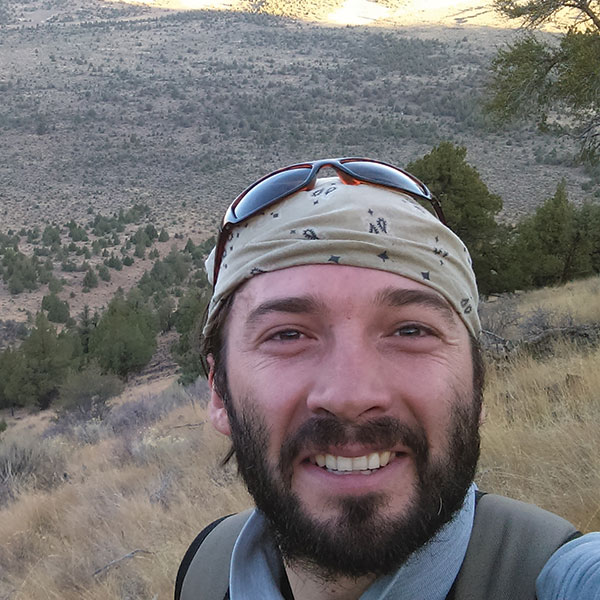
- by Dr. Bogdan Cristescu 8 April 2022
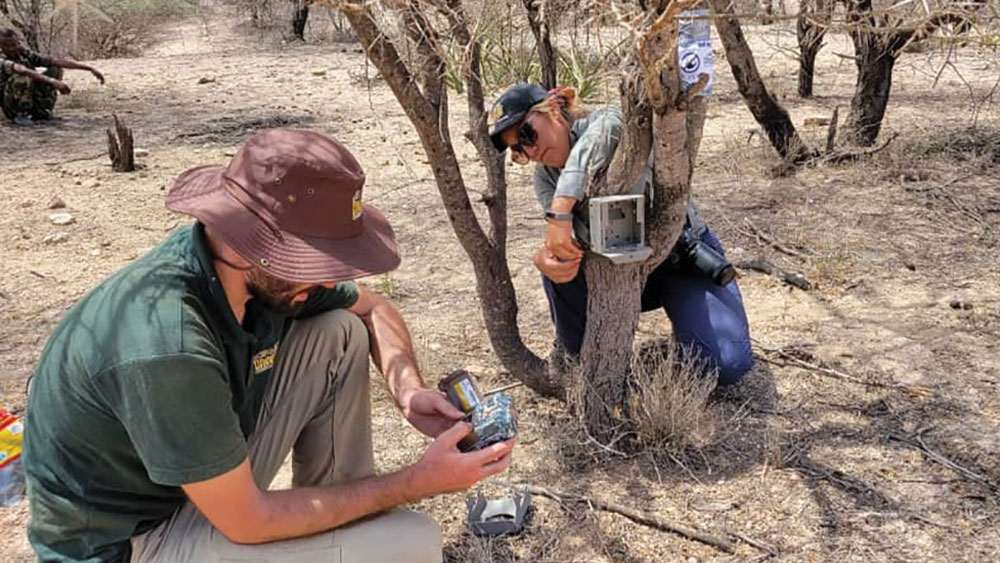
February 2022 marked my one-year anniversary as the Assistant Director for Ecological Research at the Cheetah Conservation Fund (CCF). When I joined the team, results from many of the long-term research projects happening at CCF and across the cheetah’s range in Africa, were being published in a variety of scientific journals.
In April of last year, research on the effectiveness of scat detection dogs for locating cheetah scat was published. That same month, we also published a research paper on scent marking behaviors in leopards and cheetahs. I help disseminate the data that CCF has collected on cheetah ecology and behavior, to form better conservation strategies. For the entire year, research was published on almost a monthly basis.
The topics CCF researched last year ranged widely from the effectiveness of livestock guarding dogs at minimizing human-wildlife conflict, captive rearing of African wild dogs, and hornbill biology. The unifying theme throughout all the research is the cheetah. The information we collect across the cheetah’s range helps us to achieve two core missions – save the cheetah and conserve the cheetah’s wild habitat.
Thanks to you, we are maintaining and restoring healthy ecosystems that can support not only cheetahs but other incredible wildlife too. Funding support makes it possible to bring policymakers together with community members to curb illegal wildlife/pet trade. Your donations mitigate human-wildlife conflict by enabling the placement of Livestock Guarding Dogs with livestock farmers, and by providing livelihood-enhancing training in predator-friendly farming techniques. And with your help, our work is safely and responsibly returning rehabilitated, orphaned cheetahs to the wild.

Though I began formally working here last year, I have been involved with CCF since 2016. I first came to CCF as a Visiting Researcher after completion of my first postdoctoral position with the University of Cape Town in South Africa. I worked in the Northern Cape of South Africa – the largest province in South Africa, bordering both southern Namibia and Botswana. My postdoc research in the Northern Cape was focused on carnivores as part of project PEACE – Predator Ecology and Coexistence Experiment. The project aimed to test the ecological and economical effectiveness of non-lethal methods at preventing livestock predation. In short, we were studying human-wildlife conflict, which constitutes one of the primary threats to the cheetah.
While I was studying in South Africa, Drs. Laurie Marker, CCF’s Founder and Executive Director, and Anne Schmidt-Küntzel, CCF’s Assistant Director for Animal Health and Research, were very busily gathering the leading researchers in the conservation, biology, and ecology of cheetahs with the goal of publishing the first-ever comprehensive scientific textbook on the species – Cheetahs: Biology and Conservation. I was very happy to be given the opportunity to contribute to six chapters of the book. While for me this was an outstanding opportunity, CCF is well-known for bringing people together on research and conservation projects across the cheetahs’ range.
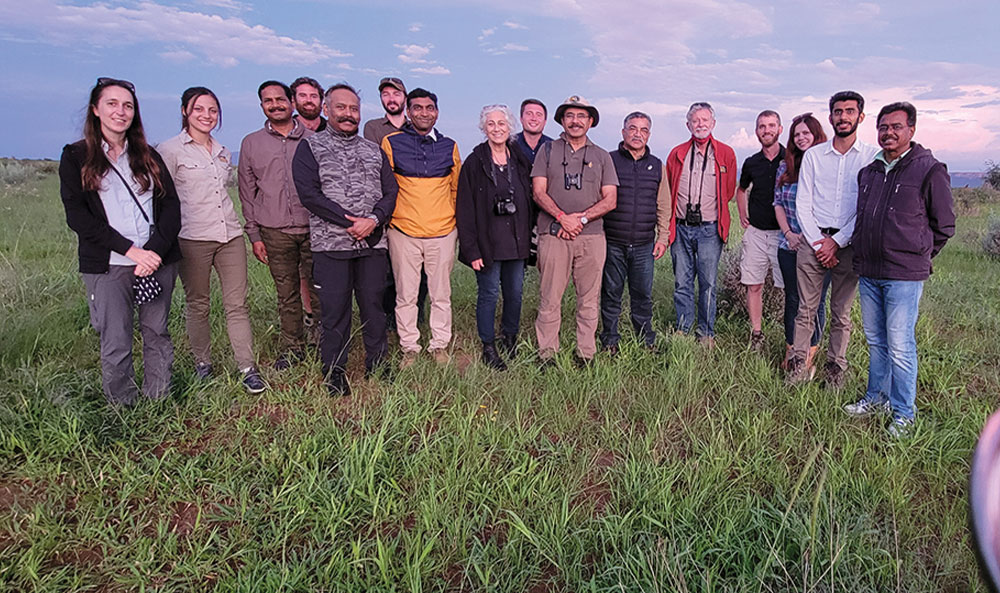
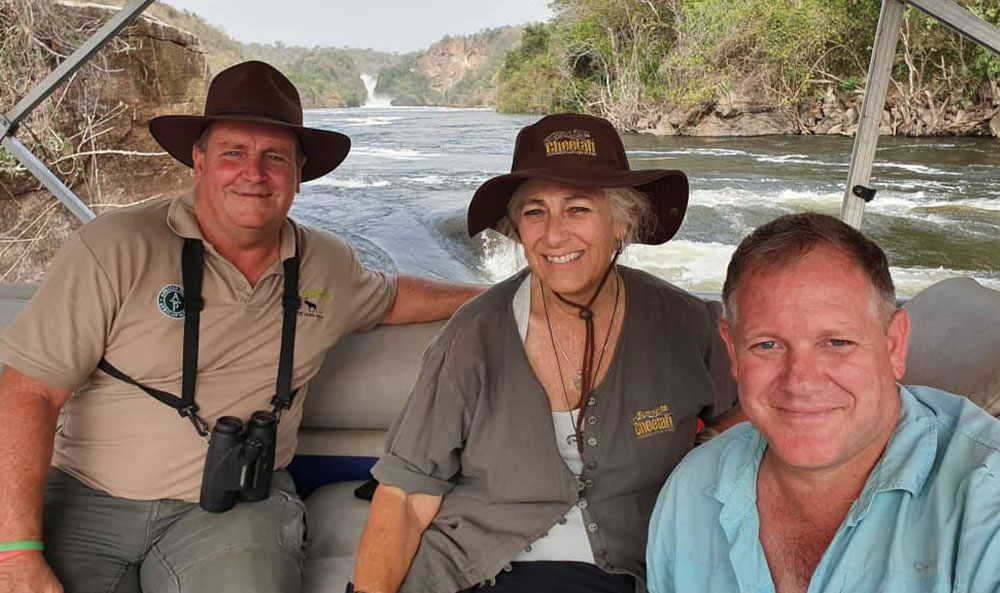
This year, CCF welcomed a delegation from India (above left), and Dr. Marker just returned from a trip to Uganda (above right) looking at potential reintroduction sites for cheetah. These countries, among many other former and current cheetah range countries where cheetah populations are at present either absent or small, are increasingly interested in reintroducing cheetahs.
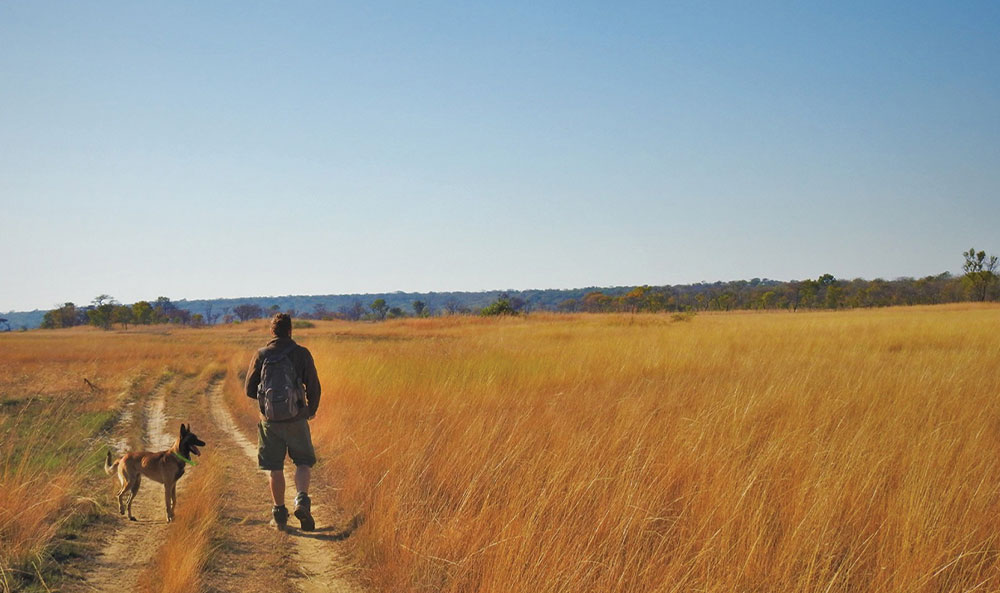
In Angola, CCF’s scat detection team (above) recently completed a scat gathering excursion in cooperation with a University in Brazil – CIBIO. Over the years, CCF has found increasing evidence of the species’ return to Angola, where the cheetah was once thought to be regionally extinct.
In Somaliland, I joined Dr. Marker (below) and other members of our local team and along with staff from the Ministry of Environment and Climate Change we conducted a weeklong survey of the western region of Somaliland. Talking with the pastoral farmers, we are beginning to get a better idea of the current distribution of cheetahs in the region, as well as the role of human-wildlife conflict in the supply side of the Illegal Wildlife Trade in cheetahs.
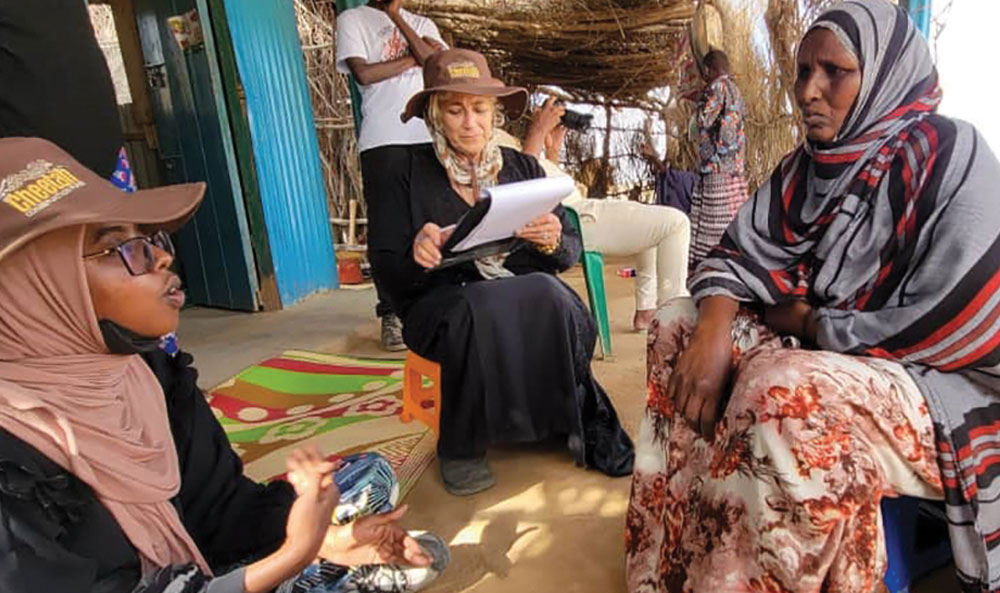
It is important to understand regional and local contexts as well as underlying causes to effectively minimize the trade; the CCF dedicated team in Somaliland are currently caring for more than 80 confiscated cheetah cubs, which is likely the tip of the iceberg of a widespread and significant challenge to the persistence of wild cheetah populations in the Horn of Africa.
None of these projects and associated conservation recommendations would be possible without a substantial volume of research conducted at every step. Your support allows CCF to be a leader in cheetah research. Thanks to you, we are positioned to serve as a Centre of Excellence in comprehensively studying the species and its ecosystems.
Please donate to CCF today. Your support is necessary for us to continue our rangewide research, education, and conservation projects that are helping save the cheetah for the future.
Sincerely,
Bogdan Cristescu, PhD
Assistant Director for Ecological Research
Related Reading
